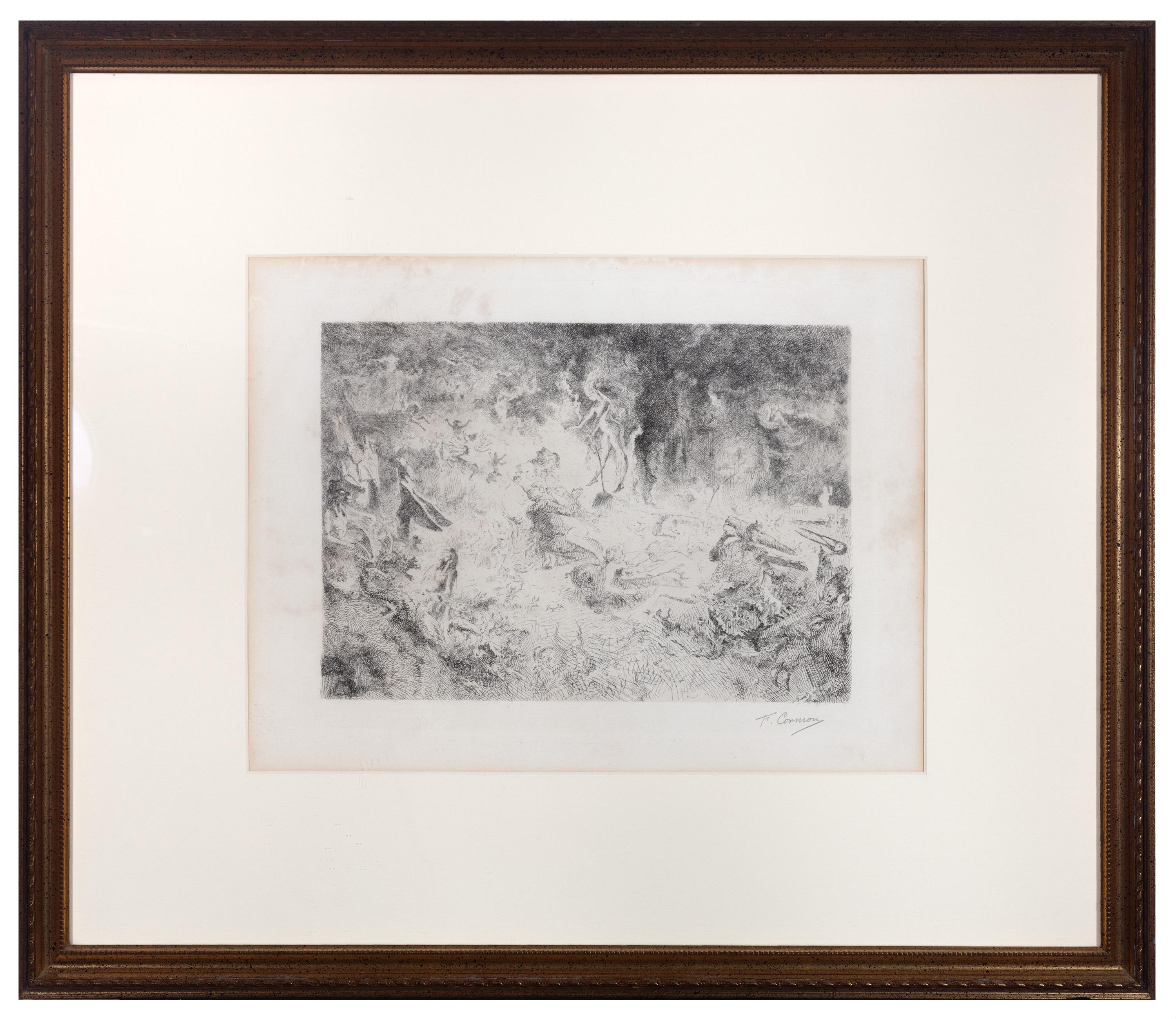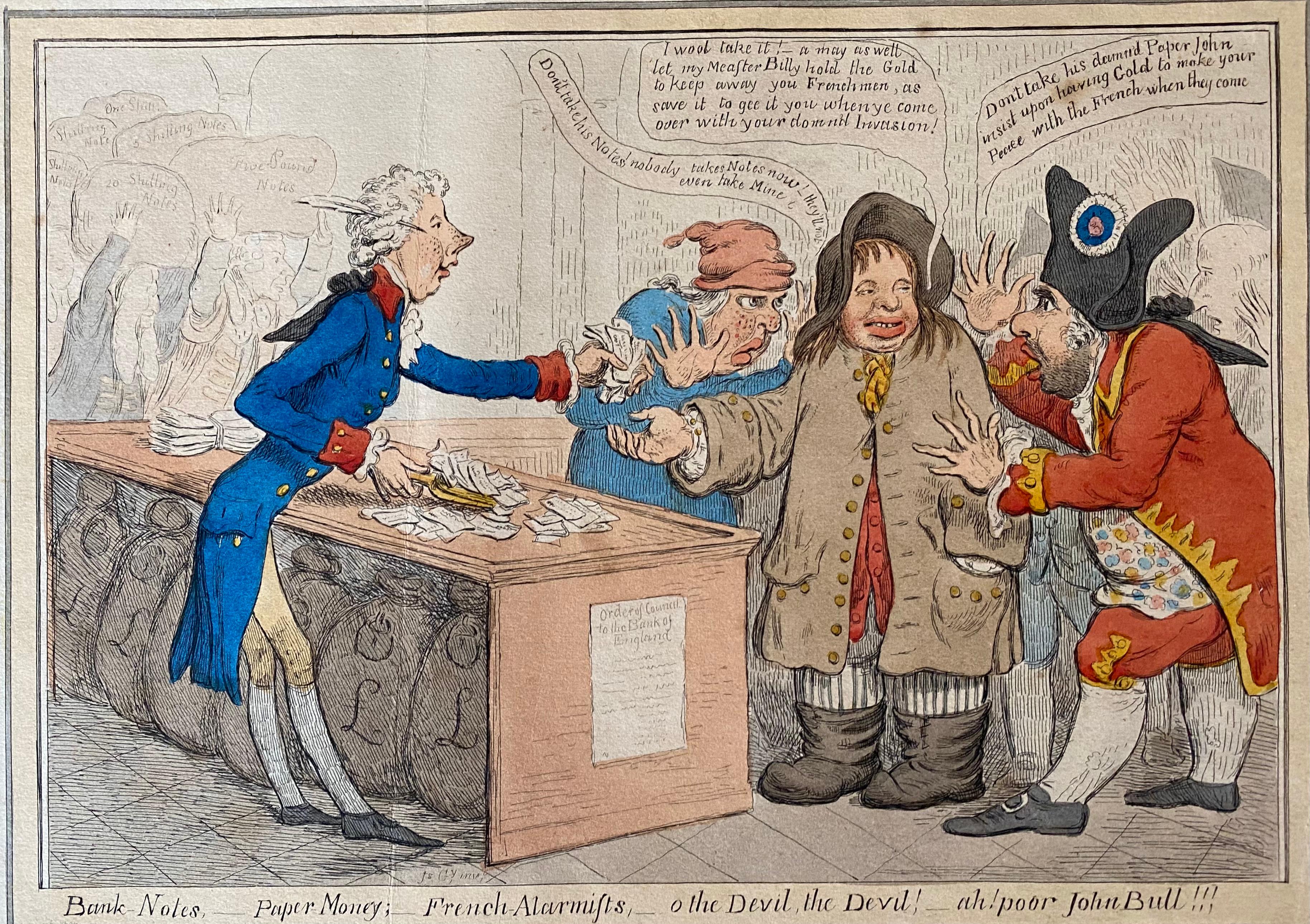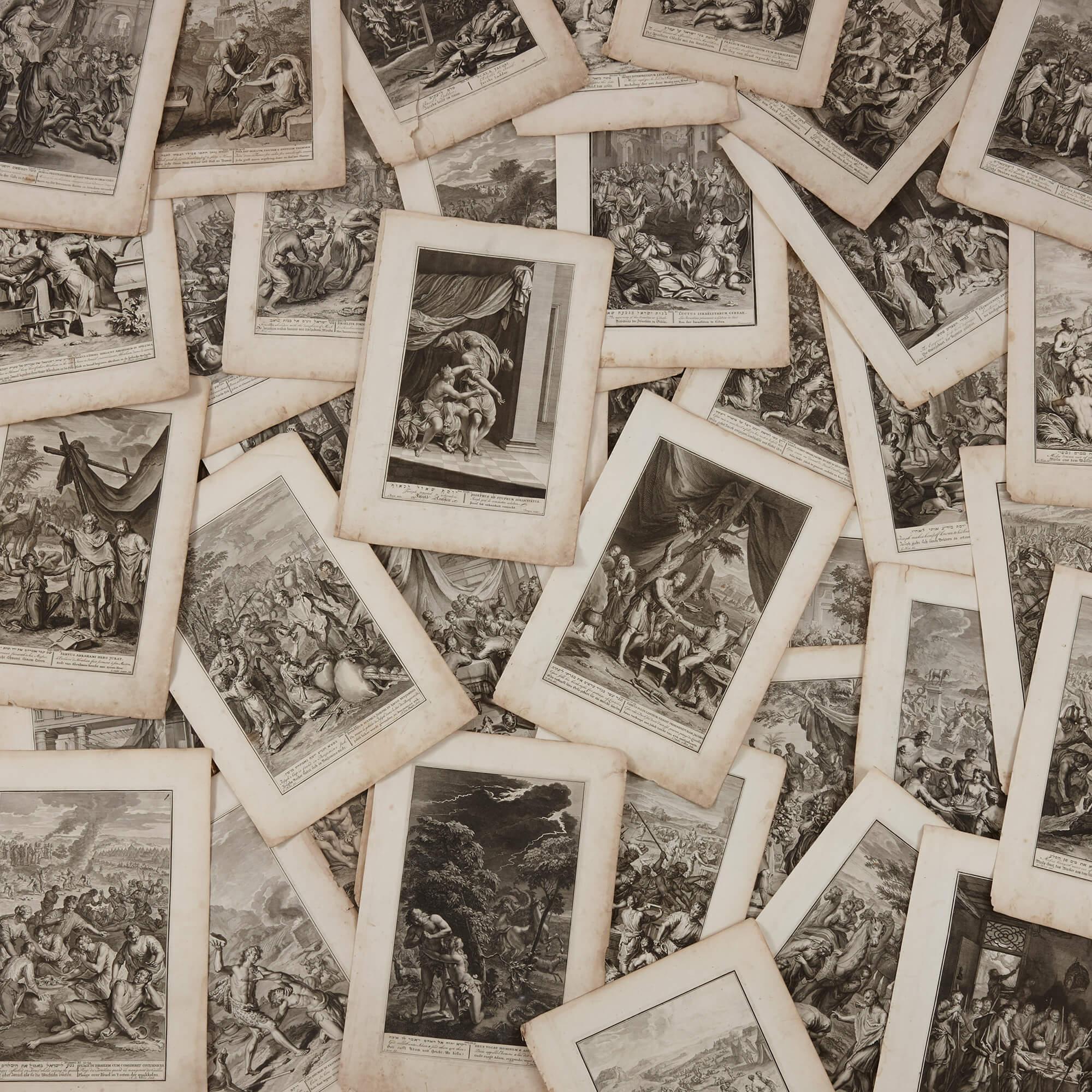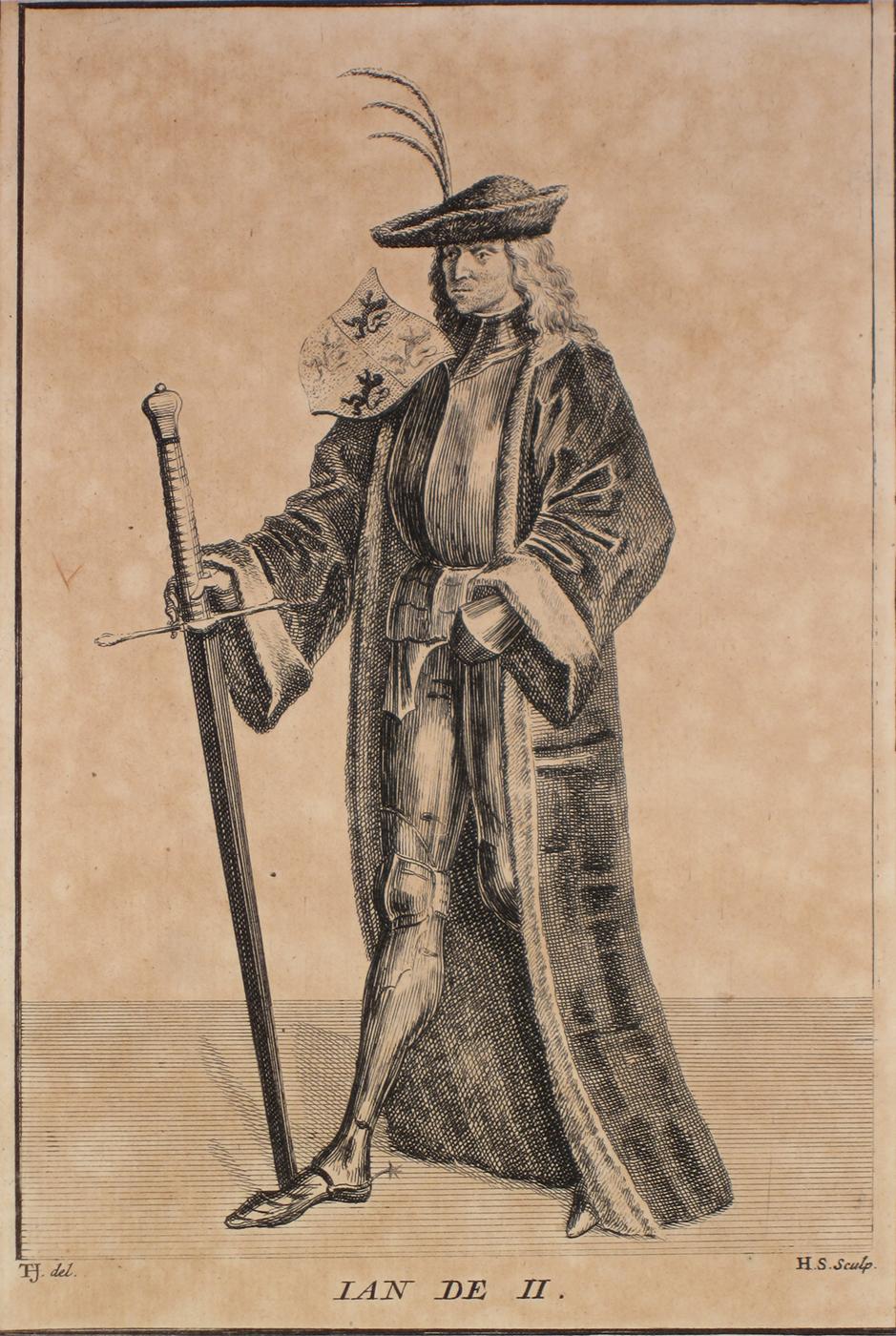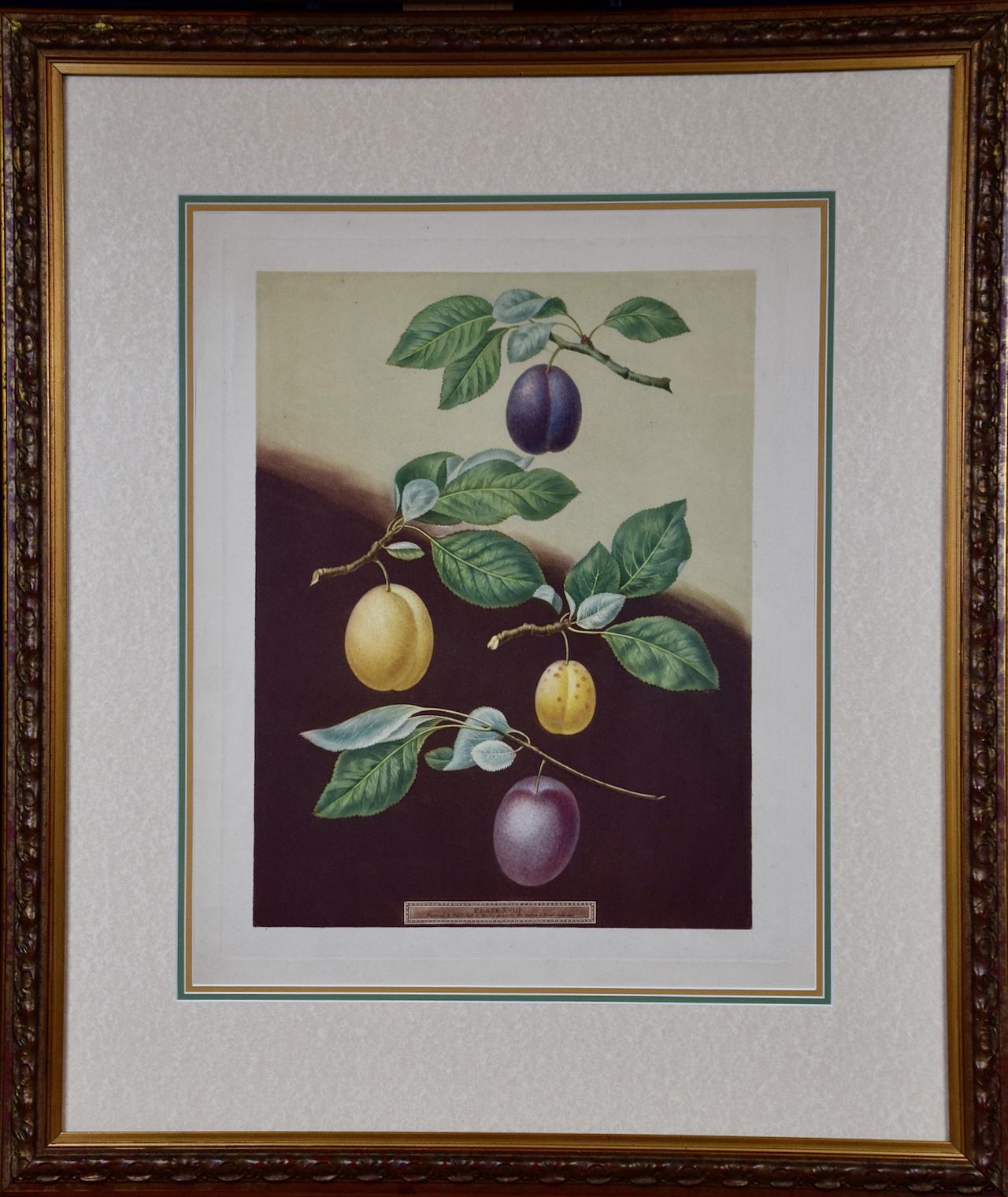Items Similar to "Cormar Attacking a Spirit on the Waters, " Neo-classical Etching by A. Runciman
Want more images or videos?
Request additional images or videos from the seller
1 of 8
Alexander Runciman"Cormar Attacking a Spirit on the Waters, " Neo-classical Etching by A. Runcimanc. 1775
c. 1775
About the Item
"Cormar Attacking a Spirit on the Waters" is an etching by eighteenth-century Scottish artist Alexander Runciman, signed on the lower edge of the etching, "ARunciman inv. & fecit," indicating at Runciman both designed the drawing and likely executed the etching. The image is of a figure standing on the bow of a ship with his back to the viewer, sword in hand and lunging forward. The sea crashes against the platform, and other human figures are visible within it, perhaps water spirits. Cormar is a figure from Book III "Fingal: an ancient epic poem, in six books: together with several other poems, composed by Ossian the son of Fingal," translated from the Gaelic language by James Macpherson in 1765. In the poem, he battles a spirit called the Son of the Wind on the sea.
Art size: 3" x 5"
Frame size: 18 7/8" x 20 3/4"
Alexander Runciman (Edinburgh 15 August 1736 – 4 October 1785 Edinburgh) was a Scottish painter of historical and mythological subjects. He was the elder brother of John Runciman, also a painter.
He was born in Edinburgh, and studied at the Foulis Academy, Glasgow, and from 1750 to 1762 he was apprenticed to the landscape painter Robert Norie, later becoming a partner in the Norie family firm. He also worked as a stage painter for the Theatre Royal in Edinburgh.
In 1767, he went to Rome, where he spent five years. His brother John accompanied him, but died in Naples in the winter of 1768–69. During Runciman's stay in Italy he became acquainted with other artists such as Henry Fuseli and the sculptor Johan Tobias Sergel. Runciman's earliest efforts had been in landscape; he now turned to historical and imaginative subjects, exhibiting his Nausicaa at Play with her Maidens in 1767 at the Free Society of British Artists, Edinburgh.
On his return from Italy after a brief time in London, where in 1772 he exhibited in the Royal Academy, he settled in Edinburgh, and was appointed master of the Trustees' Academy. He was patronised by Sir James Clerk, whose hall at Penicuik House he decorated with a series of subjects from Ossian. He also created various religious paintings and an altar-piece in the Cowgate Episcopal Church, Edinburgh, and easel pictures of Cymon and Iphigenia, Sigismunda Weeping over the Heart of Tancre, and Agrippina with the Ashes of Germanicus.
In 1773 he is listed as sharing a studio with a Mr McLarin at the foot of Old Assembly Close off the Royal Mile (facing what is now called the Cowgate).
He enjoyed a strong reputation as a landscape painter is his lifetime. Some of his works, due to their spontaneity, vigour of style and colour, and unorthodox composition, place him as an early exponent of modern art. Keith Ralph studied under Alexander Runciman.
Runciman died in Edinburgh and is buried in Canongate Churchyard. The grave is unmarked but a stone plaque was erected by the RSA in 1866 on the west-facing wall of the church to his memory (also commemorating his brother John who died in Naples).
- Creator:Alexander Runciman (1736 - 1785, British)
- Creation Year:c. 1775
- Dimensions:Height: 18.875 in (47.95 cm)Width: 20.75 in (52.71 cm)
- Medium:
- Movement & Style:
- Period:1770-1779
- Condition:
- Gallery Location:Milwaukee, WI
- Reference Number:
About the Seller
4.9
Platinum Seller
These expertly vetted sellers are 1stDibs' most experienced sellers and are rated highest by our customers.
Established in 1966
1stDibs seller since 2017
389 sales on 1stDibs
Typical response time: 1 hour
- ShippingRetrieving quote...Ships From: Milwaukee, WI
- Return PolicyA return for this item may be initiated within 14 days of delivery.
More From This SellerView All
- "The Temptation of Saint Anthony " Etching, SignedBy Fernand CormonLocated in Milwaukee, WI"The Temptation of Saint Anthony" is an original etching by Fernand Cormon. This piece has the artist's stamp. The piece is signed in pencil by the artis...Category
1890s Academic Figurative Prints
MaterialsEtching, Paper, Ink, Laid Paper
- "Le Petit Cirque Prinder, " Original Etching signd by Auguste BrouetBy Auguste BrouetLocated in Milwaukee, WI"Le Petit Cirque Prinder" is an original etching by Auguste Brouet. This piece depicts a variety of circus performers surrounded by small children. The artist signed the piece in the...Category
1910s Academic Figurative Prints
MaterialsPencil, Etching
- "Marriage of St. Margaret and King Malcolm, " Original Etching by A. RuncimanBy Alexander RuncimanLocated in Milwaukee, WI"The Marriage of Saint Margaret and King Malcolm" is an etching by Scottish artist Alexander Runciman. There is an engraved signature with the artist's monogram followed by "pinxit et fecit," indicating that Runciman both designed the original drawing and likely executed the etching on the metal plate. On the left, a young woman with a halo in fine dress stoops slightly and gathers her skirts as she leans over to accept the ring that the man on the right is reaching to place upon her finger. He is also young, dressed finely, and wearing a crown. Between them, a church official with a pointed hat and a long flowing beard recites the appropriate prayers for the occasion, while onlookers crowd in the background. The tiled floor demonstrates the use of one-point perspective, and the church appears to be in the Gothic style. Art size: 8 3/4" x 7 1/4" Frame size: 26 1/2" x 22 3/8" Alexander Runciman (Edinburgh 15 August 1736 – 4 October 1785 Edinburgh) was a Scottish painter of historical and mythological subjects. He was the elder brother of John Runciman, also a painter. He was born in Edinburgh, and studied at the Foulis Academy, Glasgow, and from 1750 to 1762 he was apprenticed to the landscape painter Robert Norie, later becoming a partner in the Norie family firm. He also worked as a stage painter for the Theatre Royal in Edinburgh. In 1767, he went to Rome, where he spent five years. His brother John accompanied him, but died in Naples in the winter of 1768–69. During Runciman's stay in Italy he became acquainted with other artists such as Henry Fuseli and the sculptor Johan Tobias Sergel...Category
1770s Academic Figurative Prints
MaterialsEtching
- "VALMY! (L'Estampe Moderne), " Print after Drawing by Adolphe WilletteBy Adolphe WilletteLocated in Milwaukee, WI"VALMY! (L'Estampe Moderne)" is a print watermarked PL BAS after a drawing by Adolphe Willette. It depicts a general with his army and a young girl. 15 3/4" x 12" art 23" x 19 1/4" frame Adolphe Léon Willette (30 July 1857 – 4 February 1926) was a French painter, illustrator, caricaturist, and lithographer, as well as an architect of the famous Moulin Rouge cabaret. Willette ran as an "anti-semitic" candidate in the 9th arrondisement of Paris for the September 1889 legislative elections. Biography Willette was born in Châlons-sur-Marne. He studied for four years at the École des Beaux-Arts under Cabanel, training which gave him a unique position among the graphic humorists of France. Whether comedy or tragedy, dainty triviality or political satire, his work is instinct with the profound sincerity of the artist. He set Pierrot upon a lofty pedestal among the imaginary heroes of France, and established Mimi Pinson, frail, lovable, and essentially good-hearted, in the affections of the nation. Willette is at once the modern Watteau of the pencil, and the exponent of sentiments that move the more emotional section of the public. Always a poet, and usually gay, fresh, and delicate, in his presentation of idylls exquisitely dainty and characteristically Gallic, illustrating the more "charming" side of love, often pure and sometimes extremely materialistic. Willette frequently reveals himself bitter and fierce, even ferocious, in his hatreds, being a violent though at the same time a generous partisan of political ideas, furiously compassionate with love and pity for the people whether they be ground down under the heel of political oppression, or are merely the victims ot unrequited love, suffering all the pangs of graceful anguish that are born of scornful treatment. There is charm even in his thrilling apotheosis of the guillotine, and in the introduction into his caricatures of the figure of Death itself. The artist was a prolific contributor to the French illustrated press under the pseudonyms "Cemoi", "Pierrot", "Louison", "Bebe", and "Nox", but more often under his own name. He illustrated Melandri's Les Pierrots and Les Giboulles d'avril, Le Courrier français, and published his own Pauvre Pierrot and other works, in which he tells his stories in scenes in the manner of Busch. He decorated several "brasseries artistiques" with wall-paintings, stained glass, &c., notably Le Chat noir and La Palette d'or, and he painted the highly imaginative ceiling for La Cigale...Category
1890s Academic Figurative Prints
MaterialsBlack and White
- "SEESAW--Gloucester, Massachusetts, " Wood Engraving signed after Winslow HommerBy Winslow HomerLocated in Milwaukee, WI"SEESAW--Gloucester, Massachusetts" is an original wood engraving after Winslow Homer. The artist initialed the piece in the lower right. This print depicts six children on a seesaw ...Category
1870s Academic Figurative Prints
MaterialsEngraving
- "Young Girl With Hat, " Victorian Portrait Etching signed Frederick M. SpiegleBy Frederick M. SpiegleLocated in Milwaukee, WI"Young Girl With Hat" is a classical Victorian portrait etching. It is signed in graphite in the lower right by the artist, F.M. Spiegle. It depicts a Victorian girl with curly hair ...Category
Late 19th Century American Realist Portrait Prints
MaterialsInk, Paper, Etching
You May Also Like
- “La Femme aux Figues”By Paul GauguinLocated in Southampton, NYOriginal etching and lavis in black ink on Arches watermarked crème laid paper by Paul Gauguin. Titled: “La Femme aux Figues” (The Woman with Figs). This impression is from the 3rd s...Category
1970s Academic Figurative Prints
MaterialsArchival Paper, Etching
- “Bank Notes”By James GillrayLocated in Southampton, NYJames Gillray (13 August 1756 – 1 June 1815) was a British caricaturist and printmaker famous for his etched political and social satires, mainly published between 1792 and 1810. Many of his works are held at the National Portrait Gallery in London. Description: Pitt (left) as a bank-clerk, very thin and much caricatured, a pen thrust through his wig, stands behind an L-shaped counter offering a handful of bank-notes to John Bull. In his right hand is a scoop with which he sweeps up notes from the counter. John is a yokel no longer bewildered. He stands stolidly, holding out his left hand for the notes, his right hand in his coat pocket. Fox (right) wears a high cocked hat...Category
1790s Academic Figurative Prints
MaterialsEtching, Archival Paper
- A set of Biblical prints after the Dutch painter and engraver Gerard HoetBy Gerard HoetLocated in London, GBThe present collection is a set of 131 prints after Gerard Hoet, the Dutch golden age painter and engraver, depicting various biblical scenes. Hoet was a leading artist in the Classicizing Dutch Academic style, and his work is defined by history paintings, with a particular interest in mythological, classical, historical, and biblical scene, in particular Old testament scenes...Category
Early 1700s Academic Figurative Prints
MaterialsPaper, Ink, Black and White, Engraving
- John II, Count of Hainaut Holland & Zeeland (1247-1304)Located in Sydney, NSW18th Century (c1740) etching/engraving , John II, Count of Hainaut Holland & Zeeland (1247-1304)Category
19th Century Academic Figurative Prints
MaterialsEngraving, Etching
- Plums: George Brookshaw's Framed Hand-colored 19th C. AquatintBy George BrookshawLocated in Alamo, CAGeorge Brookshaw's (1751-1823) beautiful "Plums" hand colored aquatint engraving from his "Pomona Brittanica", considered to be the finest British botanical large format treatise of the 19th-century. His engravings were unique for their rich tones and colors, elegant compositions with the fruit seeming to float on a mottled sumptuous background. There are purple, mustard-colored plums on brown branches with green leaves over a two-tone dark brown and light tan background. The print is presented in an ornate bronze-colored wood frame with gold-colored inner and outer trims and a triple mat. The outer mat is a marbled light...Category
Early 19th Century Academic Figurative Prints
MaterialsAquatint
- Peaches, Nectarines: George Brookshaw's 19th C. Framed Hand-colored AquatintBy George BrookshawLocated in Alamo, CAGeorge Brookshaw's (1751-1823) beautiful "Peaches, Nectarines" hand colored aquatint engraving, plate 38 from his "Pomona Brittanica", considered to be the finest British botanical large format treatise of the 19th-century. His engravings were unique for their rich tones and colors, elegant compositions with the fruit seeming to float on a mottled sumptuous background. The pale green and peach-colored peaches and the pink and green flowers lie on a rich dark brown-colored background. The print is presented in an ornate bronze-colored wood frame with gold-colored inner and outer trims and a triple mat. The outer mat is a marbled light...Category
Early 19th Century Academic Figurative Prints
MaterialsAquatint
Recently Viewed
View AllMore Ways To Browse
What Is A Antique
Alexander John
Stone Plaque
Classical Mythological
Books By The Foot
Classical Plaque
Antique Art Easel
Antique Art Easels
Modern Neo Classical
From The Antique Poem
Alexander James
Stone Altar
Antique Artist Easel Easels
Antique Artist Easel
Antique Prints Edinburgh
Antique Prints Of Edinburgh
Alexander Iii
Italian Old Master Ink
